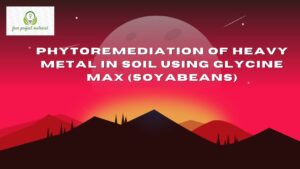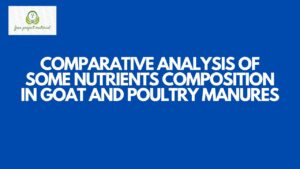ABSTRACT
M. cola is a well known traditional medicinal plants that belongs to the family Malvaceae. The research work is to determine epidermal characteristics of M. cola. The results obtained for the abaxial and adaxial surface were amphistomatic distribution of stomata, anisocytic stomata and the epidermal cell shape was irregular. The identification is commonly based on microscopic feature or unique visible characteristics.
Table of Contents
Title page- – – – – – – – – – i
Certification- – – – – – – – – ii
Dedication- – – – – – – – – – iii
Acknowledgement- – – – – – – – iv
Abstract – – – – – – – – – – v
Table of contents- – – – – – – – vi-vii
CHAPTER ONE
1.0 INTRODUCTION
1.1 Background of the study- – – – – – – 1-2
1.2 Aim and Objectives of the Study- – – – – 3
1.3 Scope and Limitation of Study – – – – – 3
CHAPTER TWO
2.0 LITERATURE REVIEW
2.1 Classification of Cola Pachycarpa- – – – – 4
2.2 Ethno-Botanical of Cola mellenii- – – – – 5-7
2.3 Description of the plant- – – – – – – 7
2.4 Taxonomy of the plant – – – – – – – 8
2.5 Distribution of the plant- – – – – – – 9
2.6 Cola Propagation – – – — – – – 10-11
2.7 Growth and yield- – – – – – – 11-13
2.8 Nutritional profile of the plant- – — – – 13-18
2.9 Phytochemical constituents of Cola milleni– — – 19-21
2.10 Antimicrobial Properties of Cola millenii– – – 21-22
CHAPTER THREE
3.0 MATERIALS AND METHODS
3.1 Materials – – – – – – – – – 23
3.1.1 Collection of plant sample- – – – – – 23
3.2 Anatomical analysis of Mellenii cola – – – – – 24
CHAPTER FOUR
4.0 RESULTS AND DISCUSSION
4.1 Results- – – – – – – – 25-28
4.2 Discussions- – – – – – – – 29-30
CHAPTER FIVE
5.0 CONCLUSION AND RECOMMENDATION
5.1 Conclusion- – – – – – – – – 31
5.2 Recommendations- – – – – – – 31
References
CHAPTER ONE
INTRODUCTION
1.1 Background of the study
Focus on plant research has increased in the world today and a large body of evidence has shown vast potential medicinal plants used in numerous traditional systems. Approximately 80% of the world wide population turns to plants derived medicines as their leading line of defense for maintaining health and fighting diseases (Chan, 2003).
Mostly, all medicines whether synthetic of non-synthetic of plant origin, should fulfill the basic requirement of quality, safety and efficacy (kunle et al., 2012). Traditional medicine products 2005). Reproducibility of quality, safety and efficacy are achieved by comprehensive processes and procedures of standardization. This proper identification becomes paramount as the world Health organization stated that the macroscopic and microscopic description of medicinal plants is the first step towards establishing the identity and the degree of purity of such material and should be carried out before any test is undertaken (World Health Organisation Geneva , 2002).
Cola Pachycarpa K. Schum. (Malvaceae) is one of many species of cola referred to as monkey Kola. The genus cola comprises of about 140 species and (Russell, 1955) unlike C. nitida and cola acuminate C. Pachcarpa possesses non edible seeds enclosed in an edible mesocarp. Primates (monkey) and Humans relish the fruit (Essien et al., 2017) which is found in the lowland rainforest and forest outliers. The mature trees can attain a height of 20-60ft(16-18m). girth up to 0.40-0.1m. Leaves are crowded at the top a stem. The plant fruit between July. November (Essien E E et al.,)Traditionally. In the eastern part of Nigeria, The Igbos Uses the seeds as stimulants (Keay et al., 1964).
Although in 2017 (Essien et al., 2017) chemical evaluation of amino acids have been done on the plants, no pharmacognostic and taxonomic work was carried out on it. The present investigation used epidermal anatomical parameters to supplement the identification and standardization information.
1.2 Aim and Objectives
The aim and objectives of this study is to determine epidermal anatomical studies of Cola Pachycarpa leafs specifics objectives:
- To assess different types of stomata present in Cola Pachycarpa leaf
- To determine epidermal character of Pachycarpa leaf.
1.3 Scope and Limitation
The scope and limitation of this research work covers the epidermal anatomical studies of Cola Pachycarpa leaf due to lack of financial problem.



